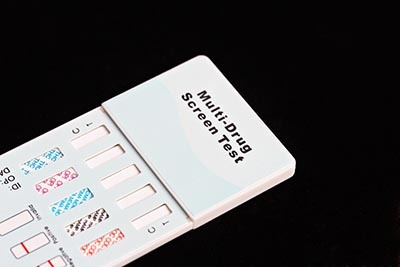5 Minute Read
March 12, 2019
0%
Construction companies deal with thousands of moving pieces daily. None, though, are more critical than people. Whether working with a handful of employees or managing hundreds of workers moving from one job to the next, a human resources manager must ensure everyone is informed, trained, paid and have their specific needs served at all times. Thankfully modern technology like cloud-based software solutions and mobile applications make these challenges of human resource management in construction easier to handle, and keep work—and workers—moving fluidly.
Ask just about any company today and they’ll likely tell you their strongest asset is its people. Without a thriving, engaged workforce in place, companies tend to sputter. This is especially true in the construction industry, where human resources professionals have their hands full not only with today’s complex projects, but with a changing workforce and employee management landscape amid the COVID-19 pandemic.
As economies and businesses cautiously begin to reopen after virtual lockdowns across the globe, the focus is now going to be on keeping employees informed, keeping them safe and keeping them engaged and responsive—all in real time. Depending on their size and the scope of work they take on, contractors can work on anywhere from two or three projects a year up to hundreds of projects. This means potentially cycling anywhere from hundreds to thousands of workers through companies’ systems each year. From hiring and onboarding to safety and skills training to benefits to both union and non-union wages—construction HR departments are often buried in work (and workers) and they have to keep track of it all in a timely manner to keep projects moving efficiently.
Amazingly, contractors have largely had to do this over the years with manual processes like paper forms, emails or spreadsheets. With new workforce dynamics spurred by COVID-19 added to already demanding modern construction needs, these manual processes simply will no longer suffice. While contractors are ready to get back to work, or ramp up the work they were doing, many workers are not going to want to handle paperwork in the field or in the back office. This means digitization of the data that keeps work—and workers—moving could soon be a must-do for contractors to ensure business continuity.
Some contractors have already started down this path. Just within the last 10 years or so contractors began adding new technology solutions to speed up processes like time card collection, payroll or the culling of labor hour data for project job costing. These ranged from full construction ERP solutions to third-party HR software systems and/or mobile applications. While they have certainly helped in some ways, these solutions often still require manual work to enter data between the office and the field or between software solutions.
Perhaps even more amazing is that some contractors, despite the availability of tech-aided HR management solutions, are still reliant solely on paper forms and documents. In today’s modern age, this can lead to a number of challenges. Time card capture and payroll, of course, immediately come to mind. An accounting or payroll clerk for a general contractor, for example, might need to process all employees’ hours by the end of the week in order to make the next payroll. But the contractor might have multiple jobs going at once, spread out across multiple regions or locales. One project’s crew might be working overtime on Friday to finish a particular phase of a project. Once done, the supervisor collects final paper time sheets and drives them to the office, miles away, where the back-office staff is waiting—themselves working overtime—to enter them into the system.
Of course, in a rush, the supervisor misplaces two workers timecards. Another worker fills out his time card wrong, omitting a full eight-hour shift. And two others didn’t want to touch paper so they relayed their hours to the supervisor, who mistakenly swapped their hours In the back office that night, no one notices the two missing time cards, or the incorrect ones. Those five workers all take a hit on their next paycheck. Once the errors are discovered, the back office team needs to chase down the missing paperwork, confirm the correct hours and fast track payments.
This is just one scenario. Navigating paper or email trails can prove challenging when there is a conflict between workers or project teams; they are not ideal for disseminating information like updated safety memos or benefits documents to spread out, disconnected teams; and they can prove problematic in tracking employee certifications, training, performance reviews and more.
Relying on these and other manual processes throughout the construction organization can cost both companies and their workers valuable time and money.
As we explore six key HR issues in construction, we’ll show you how having a modern construction software platform that includes an integrated HR solution like Viewpoint HR Management can help turn those issues into efficiencies. By streamlining real-time data and automating critical HR workflows, technology is removing the headaches and burdens from strained construction HR teams. And, it is boosting communication and collaboration across the organization, leading to happier, higher-performing employees, more productive projects, and higher-performing companies.

The construction industry has enjoyed annual growth for nearly a decade, which may lead to new avenues for work and projects aplenty, but it has also created a significant challenge in sustaining a skilled workforce. The construction industry still has not recovered from the loss of talented workers during recession of the mid-2000s, as many moved on to other industries and construction’s appeal among younger workers has waned. Still, contractors who appeal to women and younger workers are finding success in building a more diverse and highly-talented employee base. Attracting these workers, though, begs the use of the latest technology. Younger, tech-savvy professionals want assurances they can stay on the cutting edge of technology while growing in a career.
Leading contractors are pitching tech-savvy professionals by touting the use of drones, wearables, artificial intelligence, BIM and tech-connected jobsites. These technology-driven enticements also makes it easier to attract talent from other sectors. Once they get professionals’ attention, solutions like Viewpoint HR Management are making the hiring and onboarding processes even easier by streamlining processes and providing online portals to apply, check job status, complete documentation and more.

Employees rank personal time off as the number-two benefit when it comes to employee satisfaction, just after healthcare, but how employees handle time off and how a company manages requests vary widely. Make it easy for you and simple for them. Create a PTO plan that works for both parties by merging sick leave and vacation into one PTO umbrella and then use an online system so that employees can request PTO via a smartphone or tablet. This is a significant benefit for construction employees that spend most or all of their time in the field on jobsites. And allowing them to self-serve needs like time off requests, acquiring documentation and more through mobile devices means they’re not waiting on others within the company to fulfill needs.
Streamlining processes like time off requests also ensures supervisors receive all PTO requests digitally and can then approve them directly within the software program, forwarding the request to HR for timely processing. According to Glassdoor.com, 84 percent of managers report that employees return to work with improved focus and creativity following PTO. So, why not create an environment that rewards work-life balance and then make gaining that balance stress-free.

Because of the number of public safety and worker safety touchpoints, the construction industry is closely watched and regulated. Contractual stipulations, federal laws and more often dictate that routine drug testing take place in construction. Stats show that drug use in construction is heightened compared to other sectors, with more than 20 percent of construction workers between 18 and 49 reported to have used an illegal substance within the past year, and 12 percent reporting use within the past 30 days.
Of course, drug testing is a sensitive topic, and few enjoy the processes behind it. So, make it less cumbersome by streamlining those processes. Software like Viewpoint HR Management can stores and track testing results — and plenty of other employee documentation. It can help alert managers when drug testing is due, provide simple workflows for workers and new hires to follow and ensure all parties have access to the same results at all times.

To help employees grow in their construction roles — and careers — continual training and skills education is needed. Providing this on a regular basis and making it easy for employees to facilitate their own growth is vital to success. Using modern construction HR software to not only store documentation like certifications, but also track upcoming training and certification needs takes the guesswork out of deadlines. Viewpoint’s HR Management solution manages all employees’ documentation and certification in one location, accessible by anyone who needs the visibility.
Turn what could prove a jumbled mess of paperwork into an easily navigable digital library, complete with notifications to alert you of that impending certification renewal. And when new training courses, educational materials or other documentation employees need to accelerate their learning curve becomes available, employees can self-serve through their own personal portals, allowing them to manage and track their own progress.

A recent study conducted by The Standard found a unique correlation between an organizations' approach to disability management and employee productivity. It makes sense that when employees feel their organization is supporting them in the right ways, they feel motivated and are able to remain productive. The study listed several ways an HR department can prepare to support employees with disabilities. Naturally, there is no one size fits all, and employers need to be prepared to support a range of health conditions within their organization.
One key insight from the study is that employees need to know where to go to get help and support for their health condition. This is where the right technology comes into play. Having a tool in place that allows employees to access the right resources and submit requests will empower employees with the information they need to know where to go to get help when they need it.

Make your construction environment a career opportunity for employees, not just a job. The turnover rate in the construction industry remains high and makes hiring and training new workers a costly venture for contractors. While you can never eliminate all turnover, take steps to lessen the challenge. By placing a focus on construction as a career, employees take a new focus with them each day. Create pathways for workers to acquire new skills, develop new leaders and managers and build deep levels of industry experience. And make these clear paths.
Utilizing technology to simplify everything from onboarding to training and educational opportunities to everyday employee needs like adjusting schedules and workloads removes layers of stress than manual processes like pen, paper, email and the reliance on busy supervisors can cause. Also, support innovation by allowing those interested in new facets of the industry, such as drones, AI and connected jobsites, to explore and advance those aspects of the company, both creating new efficiencies for the organization and building new skills and buy-in for the employee.

In this new age of social distancing in the workplace, the only viable path forward is to create a modern, self-service culture that leverages technology rather than paper. This keeps employees safe and takes the burden off already stretched construction HR professionals. To do this effectively, contractors need a cloud-based, integrated construction software suite. This provides a single source of HR data truth that extends out to the workforce in real time.
Trimble Construction One is that connected construction software suite that can meet construction HR professionals’ modern needs. As part of the suite, Viewpoint HR Management provides web-based portals and mobile apps that extend HR Management beyond the back office ERP. This allows employees to self-serve many of their HR needs, saving valuable time for burdened HR teams.
For example, an electrical contractor with technicians spread across a wide geographic region can have a single access point where technicians access a web portal from their mobile device and add their hours, request time off, report overtime, view their time-off balances, view and download their paystubs and W2s and much more. When data is entered, it immediately populates in the back-office systems and is routed to the correct supervisor for approval. And, the information the workers need is at their fingertips, eliminating paper forms and countless calls or emails to HR for updates or personnel documents.
These connected solutions can also help get new projects up and running quickly. As work resumes and contractors look to hire new workers or rehire those that were furloughed or laid off, streamlining the hiring and onboarding processes become critical.
Take a heavy highway contractor, for instance, setting up a new project for construction of a bridge in a region it has never worked in before. As part of its contract, the contractor is expected to hire local workers to make up part of its on-site crew. Using HR Management, applicants can easily apply via the web portal and their digital applications are automatically tracked and routed to the correct hiring managers. Once hired, these new workers can access the same portal to receive and sign all of their paperwork, access must-read documents and more. This saves HR teams countless hours of handling these processes for each individual worker.
With changes to how construction workforces are managed in the future, having a connected, real-time HR solution is also becoming more important for sharing real-time policy updates, safety information and more. And it’s not just pandemics where emergency information needs to be communicated in real time. A weather event, an accident or active external threat are all incidents where contractors should be able to share vital information with their teams in real time via tools like mobile devices and SMS texts.
Trimble Construction One and Viewpoint HR Management provide contractors with the modern tools they need to better manage their teams. Contractors can not only go paperless and relieve the typical HR burdens, they can create an environment where employee communication and collaboration is celebrated.
Connect with Trimble Viewpoint today to find out how your construction HR processes could benefit with Trimble Construction One.
5 Minute Read
March 12, 2019